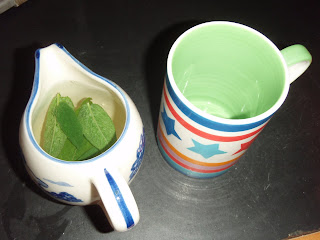
This borage is growing my Chichester garden. Borage grows well in pots or windowsills. It is essentially a wild flower and tends to spread rapidly in the garden.
Borage is often considered a rather boring herb as the leaves have little fragrance or taste (they have a cucumber flavour). However, on further investigation I found there to be lots of interest about this herb.
Borage is also known as Starflower in reference to its five petalled star-like flowers which are attractive to bees as they are rich in nectar. It is said that the blue colour of the flower was the inspiration for Madonna's robes in Renaissance paintings. Borage grows well near tomatoes and acts as a natural pest control. Perhaps the most interesting point of all is the link between borage and cancer management.









